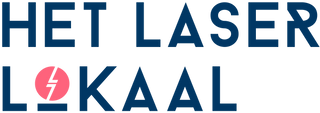Optimize your design for laser cutting
How do I design for the cheapest result?
Follow the drawing rules.
By following the general guidelines described in the drawing rules, you save unnecessary costs.
Keep parts as small and simple as possible.
After all, large, complex parts cost more than small parts, both in material costs and processing costs.
Place parts close together to save a lot of material.
By nesting parts together, you save significantly on material costs. In some cases, objects can be placed in the leftover material of other objects. Also, keep our standard material sizes in mind to avoid unnecessary leftover material.
Remove unnecessary overlapping lines.
Overlapping lines result in extra cutting time and also a less attractive cutting edge.
Flat engraving vs line engraving.
Depending on your design, it may be cheaper to use flat engravings or line engravings. Generally, when shapes are small and complex, flat engraving is cheaper; otherwise, line engraving is more cost-effective. There are also other factors to consider with flat engravings, read more about it here.
Choose the thinnest and softest material possible.
Thinner and softer material is generally cheaper and can be cut faster.
Share cut lines.
Designs with many identical parts or many straight lines where dimensional accuracy can deviate by a fraction of a millimeter can be designed with shared cut lines. This means that these objects share a cut line on one side, but it is important to remove the overlapping section.This technique can significantly reduce cutting costs; however, sometimes outer parts are cut first before the inner shape is cut out. This can cause a slight shift of a few tenths of a millimeter.
Nesting.
Nesting is the optimization of a drawing to minimize waste material to save on material costs. First, it is important to look at the standard sizes of each material, which are indicated on the materials page. Place all parts within the dimensions of the smallest standard size suitable for your drawing. This minimizes waste material.
If your design allows you can place parts within each other. For example, if you have different sizes of rings, they can be efficiently placed within each other.This is easy when it involves a few parts, but for many parts, it is useful to use nesting software. Most nesting programs are paid, but there are also free software packages like Deepnest.io.
It is more cost-effective to nest yourself, but if you prefer us to do it, that is also possible. We have professional software to position large numbers of (different or identical) shapes as effectively as possible. This keeps material costs as low as possible. Not every drawing needs to be nested. In some cases, the extra work or costs do not outweigh the material savings.
Designing flat engravings smartly.
Flat engravings are a completely different process than cutting or engraving lines, and they are executed and calculated differently.If your drawing contains flat engravings, the laser engraving starts at the bottom of the drawing and the laser head "scans" at high speed from left to right over the material, taking a small step on the Y-axis with each back-and-forth movement. The machine, however, does not process each "piece" of flat engraving in the drawing separately but does all the flat engravings simultaneously (combined). The minimum position on the X-axis and the maximum position on the X-axis (per step on the Y-axis) determine the total engraving time. Depending on how the flat engravings are arranged, a large part of the flat engraving may only involve the movement of the laser head. This can be easily remedied by ensuring that the different flat engravings in a design are positioned in such a way that no large "bridges" of movement are created. In the example below, the black text is engraved in two different ways, all next to each other and all above each other.By stacking the parts on top of each other, the laser has to cover less distance for the engravings, and the task is completed faster. Unfortunately, the movement between the letters cannot be avoided.





